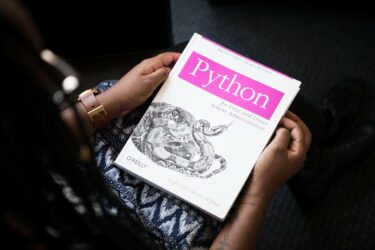Read full review of BookwormHub.com
This is the sequel of the second article of the segment.Robert Oppenheimer: Quantum Mechanics & Nuclear Physics
Julius Robert Oppenheimer (April 22, 1904 – February 18, 1967) – was American theoretical physicist, professor of physics at the University of California at Berkeley, member of the US National Academy of Sciences (since 1941).

Contributions
Oppenheimer’s most significant milestones in physics include Born-Oppenheimer approximation for molecular wave functions, work on the theory of electrons and positrons, the Oppenheimer-Phillips process in nuclear fusion, and the first prediction of quantum tunneling. He and his students have made an important contribution to the modern theory of neutron stars and black holes, as well as to the solution of certain problems of quantum mechanics, quantum field theory and the physics of cosmic rays. Oppenheimer was a lecturer, science communicator, and the founding father of the American school of theoretical physics, which gained its worldwide fame in the 1930s.
Downside
Oppenheimer was widely known as the scientific leader of the Manhattan Project, which developed the very first nuclear weapons during the Second World War. Because he was the main nuclear physicist and director that designed the actual bomb he became known as “the father of the atomic bomb”. The atomic bomb was first tested in New Mexico in July 1945. Infamous line “I am death, destroyer of worlds” was the quote from Bhagavad Gita that he recalled at the moment.
After World War II, he became director of the Institute for Advanced Study at Princeton. He also became a senior advisor to the newly formed US Atomic Energy Commission and using his position he later advocated international nuclear energy control to prevent nuclear proliferation and the nuclear race. This anti-war stance angered a number of politicians during the second wave of the Red Menace. As a result, in 1954 his access to secret work was denied. Since then having no direct political influence he continued to lecture, write scientific publications and work in the field of physics. Ten years later, President John F. Kennedy awarded the scientist the Enrico Fermi Prize for political rehabilitation. The award was presented after the death of Kennedy by Lyndon Johnson.
Werner Heisenberg: Quantum Mechanics & Fascism
Werner Karl Heisenberg (December 5, 1901, Würzburg – February 1, 1976, Munich) – German theoretical physicist, creator of “Heisenberg matrix quantum mechanics”, Nobel Prize winner in physics (1932).

Contributions
Heisenberg is the author of a number of fundamental works in quantum theory. He was one of iconic scientists, whose work shaped the image of 20th century physics. By his definition of measurable quantities as non-commuting operators, he made the final breakthrough in classical physics and laid the foundation for a consistent formulation of quantum mechanics.
He broke down the foundations of matrix mechanics, formulated the uncertainty relation, applied the formalism of quantum mechanics to problems of ferromagnetism, the anomalous Zeeman effect and others. In 1932 Werner became Nobel Prize laureate in physics for the creation of quantum mechanics, the application of which has, inter alia, led to the discovery of the allotropic forms of hydrogen.
Downside
After the outbreak of World War II like many other physicists (Otto Gann and Karl Weizsäcker) was drafted into the army weapons department of the 3rd Reich. His goal was to equip the Third Reich with nuclear weapons. Heisenberg was the author of a reactor in which uranium was enriched for future atomic bombs in Germany. As a result, Werner contributed to nuclear physics (introduced the concept of isospin) and to elementary particle physics. He is the author of works on the structure of the atomic nucleus.
Heisenberg was responsible for conducting theoretical work on the design of several nuclear reactors (with and without usage of heavy water). Thus, he was a major part of German nuclear program that aimed at creating nuclear weapons, which were carried out in Nazi Germany in 1939-1945. Heisenberg became the main contributor to the German atomic program during World War II.








